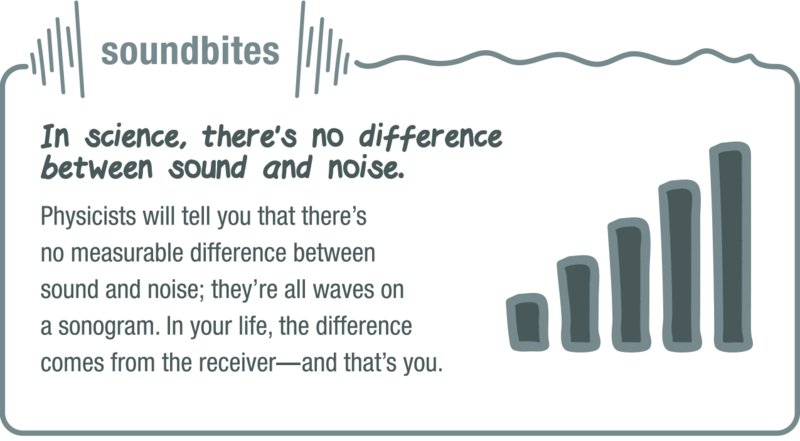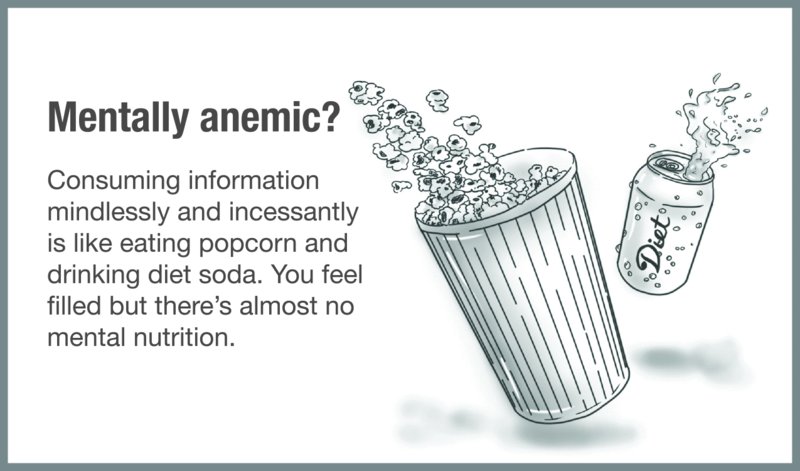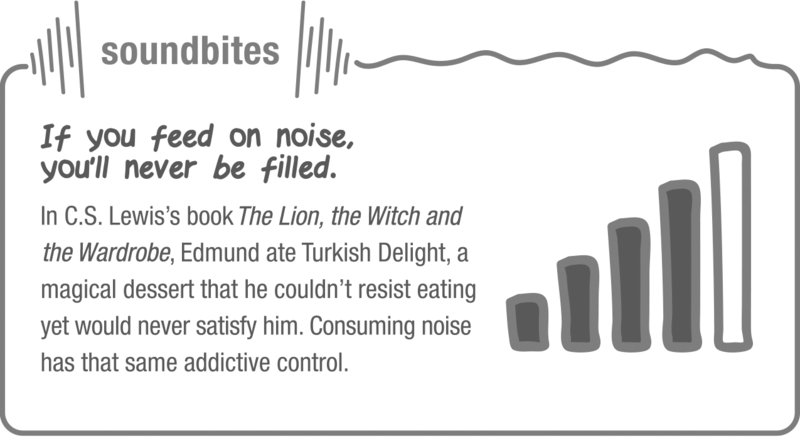



Cover design/Art direction: Megan Palicki
Illustration design: Joan Bueta
Copyright © 2020 by Joseph McCormack. All rights reserved.
Published by John Wiley & Sons, Inc., Hoboken, New Jersey.
Published simultaneously in Canada.
No part of this publication may be reproduced, stored in a retrieval system, or transmitted in any form or by any means, electronic, mechanical, photocopying, recording, scanning, or otherwise, except as permitted under Section 107 or 108 of the 1976 United States Copyright Act, without either the prior written permission of the Publisher, or authorization through payment of the appropriate per-copy fee to the Copyright Clearance Center, Inc., 222 Rosewood Drive, Danvers, MA 01923, (978) 750-8400, fax (978) 646-8600, or on the Web at www.copyright.com. Requests to the Publisher for permission should be addressed to the Permissions Department, John Wiley & Sons, Inc., 111 River Street, Hoboken, NJ 07030, (201) 748-6011, fax (201) 748-6008, or online at http://www.wiley.com/go/permissions.
Limit of Liability/Disclaimer of Warranty: While the publisher and author have used their best efforts in preparing this book, they make no representations or warranties with respect to the accuracy or completeness of the contents of this book and specifically disclaim any implied warranties of merchantability or fitness for a particular purpose. No warranty may be created or extended by sales representatives or written sales materials. The advice and strategies contained herein may not be suitable for your situation. You should consult with a professional where appropriate. Neither the publisher nor author shall be liable for any loss of profit or any other commercial damages, including but not limited to special, incidental, consequential, or other damages.
For general information on our other products and services or for technical support, please contact our Customer Care Department within the United States at (800) 762-2974, outside the United States at (317) 572-3993 or fax (317) 572-4002.
Wiley publishes in a variety of print and electronic formats and by print-on-demand. Some material included with standard print versions of this book may not be included in e-books or in print-on-demand. If this book refers to media such as a CD or DVD that is not included in the version you purchased, you may download this material at http://booksupport.wiley.com. For more information about Wiley products, visit www.wiley.com.
Library of Congress Cataloging-in-Publication Data:
Names: McCormack, Joseph, 1965- author.
Title: Noise : living and leading when nobody can focus / Joseph McCormack.
Description: Hoboken, New Jersey : Wiley, [2020] | Includes index.
Identifiers: LCCN 2019030965 (print) | LCCN 2019030966 (ebook) | ISBN 9781119553373 (Hardcover) | ISBN 9781119553359 (ePDF) | ISBN 9781119553366 (ePub)
Subjects: LCSH: Distraction (Psychology) | Noise. | Leadership.
Classification: LCC BF323.D5 M33 2020 (print) | LCC BF323.D5 (ebook) | DDC 153.7/33—dc23
LC record available at https://lccn.loc.gov/2019030965
LC ebook record available at https://lccn.loc.gov/2019030966
This book is dedicated to all of my brothers and sisters (Mary Carol,
Jean, Matt, Peg, Annie, Kate, John, and Patrick), a constant
source of encouragement, laughter, inspiration, and love.
From my childhood to the present day, they are the best
family one could have. In particular, I dedicate this book
to my late brother Johnny, my best friend and closest
collaborator, whom I miss dearly every day and work
hard to honor.
Joe graciously mailed me a pre-release copy of NOISE, the book you’re now holding. After reading it, I conducted a little experiment:
I disabled my e-mail alerts, shushed my social, and nuked (most of) my notifications.
Muzzled. Gag-ordered. Zipped.
Mind you, I didn’t delete any of my accounts. I’ve in no way pulled a Henry David Thoreau and left the digital city for the analog woods altogether. This is neither a “Finished with Facebook!” freakout, nor a “malaise of modernity” manifesto. Rather:
I simply realized I was done with being distracted.
Field Notes from Three Months in a Quiet Place:
This important book, NOISE, is ultimately about Attention Economics. About the idea that a “wealth of information creates a poverty of attention, and a need to allocate that attention efficiently among the overabundance of information sources that might consume it.”
Nobel Prize–winning economist Herbert Simon wrote that quoted bit in 1971. Before smartphones. Before the Web. Before cable TV.
Nearly 50 years on, Joe McCormack brings us the means to prosper in this “poverty.” NOISE isn’t a radical license to unplug and live in an uninformed bubble, but a playbook to help us be radically intentional about the sources—and formats—of information worthy of our precious time and attention. Not earplugs: a hearing aid.
Consider NOISE both a challenge and an encouragement to attend to your plan—not the next “ding.”
—Mike Bechtel
Futurist, Deloitte
Professor of Corporate Innovation, University of Notre Dame
Moving beyond digital interventions, I’ve since posted a paper sign outside my home office door that says: “Dad’s Busy Earning Your Roof, Meals, & Allowance. Emergencies Only!”
I hear racing footfalls of my 7- and 9-year-olds, building to a crescendo.
Knock Knock Knock.
“Dad’s working, guys. Is it an emergency?”
“Yes. Well … kind of.”
“Okay. What’s up?”
They proceed to throw open the door to notify me that a new season of Stranger Things has just dropped.
Unable to shush my children, I consider disabling Netflix.
Can you stop the flood?
Your best bet is to get out of the way or find a boat to float to safety. We are in an unnerving moment in history: information is becoming more of a threat than a reward.
You can’t get out of its way, so how do you handle all of it and not have it overwhelm you?
When I wrote BRIEF: Make a bigger impact by saying less in 2013, my biggest concern was helping people learn to be clear and concise. Basically, get your point across or get dismissed.
Dedicating myself the past few years to spreading the message that “less is more,” I am alarmed by a growing trend that the need for brevity reveals: information is so readily accessible that it is now burdening us.
It all sounds like senseless noise.
Focus is a huge problem. People’s attention spans are shrinking, and it’s no joke. It’s harder and harder to tune in to the essentials and tune out what drowns us.
There are two sides to the coin.
Certainly, one side of the issue is brevity—cutting through the clutter. Essentially, think of it as an adaptive strategy: get to the point before someone tunes you out.
Yet, the other side is how to avoid tuning into nonstop static in an always-on, connected life. How can we stay mentally focused when faced with such information inundation?
As I start seeing progress on one side of the issue, developing lean communicators and setting a higher communication standard, I feel there’s also a larger battle we are losing.
The point of this book is to set off an alarm: the world is going deaf. We’ve gone far beyond the promise of the information age and are now so consumed by it that it threatens our existence.
Here’s a dire picture of our world moving forward:
Our lives in an information age are like facing a tsunami. Being able to hold onto something sturdy, permanent, and solid means a chance to survive and thrive. Giving into the endless sources of distraction and empty information means getting swept permanently out to sea.
The threat of infobesity is profound and potentially permanent for generations to come.
What matters most to me is helping people get better at surviving this calamity. I’ve spent so much time over the past few years witnessing a deep erosion of focus that I’m motivated to help those willing, interested, and able to withstand the societal shift that threatens our ability to communicate and connect with each other.
We need to maintain what makes us really human.
Our focus as a society is dwindling as our addiction to screens, technology, distractions, and interruptions grows. We’re becoming mentally anemic, consuming useless information with little value.
This is an enormous issue that will forever change our lives. Will the implications of incessant information consumption make us all collectively deaf to one another?
This was my motivation writing this book. How can we adapt when getting drowned out in so much noise in all facets of our lives?
It’s time for noise abatement.


The title of this book is a story unto itself.
For several months, the initial project operated under the working title In One Ear, and Out the Other. Though catchy, it didn’t completely capture and communicate the true essence of the book’s message. One day, I had a brainstorm session with my close collaborators, project manager Ania Waz and editor Karen Quinn, in my office in suburban Chicago.
Through that clarifying conversation, NOISE emerged. I cannot thank both of them enough for their untiring commitment from beginning to end on this journey.
Excited and energized with the new title, I started spreading the word to my co-workers, collaborators, and close friends. For a year, the vision got clearer, and people’s enthusiastic reactions motivated me onward. In particular, my siblings never stop encouraging me, specifically my sisters Peggy and Ann, and my brother Matt—all of my family, for that matter.
I’ve always seen this book as a companion to BRIEF and, in some ways, even a prequel. Designing the cover, I knew the two titles needed to look like alike—almost siblings—paired and meant to be read together since their content goes hand in hand. I cannot thank enough Megan Palicki and Joan Bueta, two talented designers, who also helped me with the first book and for whom I have the highest admiration for their creativity, taste, and strong brand sense. They didn’t disappoint and brought the vision to life, not only with the cover but also with their many illustrations. Thanks again for being there for me and staying part of the family.
I also counted on a number of individuals for ongoing support in writing this book. First off, Brian Neill and Vicki Adang at John Wiley & Sons. Also, Joyce Duriga, Marc McCormack, and Mickey Novak, with research and editing.
My co-workers continue to believe in me and my vision. In particular, I need to thank Charley Thornton and our team in Chicago who lead our corporate practice. As for my Southern Pines, North Carolina, team, I appreciate the constant support and fun-loving spirit of Michelle McKinney, Steve Cain, and Jill Catron, who encourage and affirm me day to day as we serve our military clients.
Finally, I need to thank my clients, both present and past, for taking on our challenge and asking us to do even more for them. Setting an elite communication standard is only a viable vision if there are people, teams, and organizations with the commitment, courage, and discipline to embrace it every day. Thanks for stepping up and setting the tone.
To the hard of hearing, you shout.
—Flannery O’Connor
We’re all connected, all day and in every way.
Smartphones, laptops, tablets, and smart watches. Screens in cars, airports, gas stations, classrooms, offices, hospitals, and hotels. The constant buzzing of a 24-hour news cycle. The list goes on.
What? Did you just miss that? Maybe you got another text, news alert, or notification?
The daily experience is to consume information at every turn. It’s nearly impossible to avoid the barrage from morning until night. How much of it is relevant? What’s useful for us, and what is simply a waste of time and energy?
Our brains are hard at work, making it harder to focus and easier than ever to get distracted. Our attention spans are rapidly eroding, and we’re now at risk. Over the years, we adapt. Many of us don’t even notice this decline because we’re too busy fixating on the next distraction, text message, e-mail, meeting invitation, social media post, or funny video clip.
Infobesity is the new normal, and it can have dire consequences. Here’s a snapshot of where we consume information:
All of this feels like nonstop, won’t-stop noise.
There’s a serious impact when we expose ourselves to these alarming conditions all day long. In a life with always-on access to information, we now face a shrinking, elusive attention span and an overstimulated, overfilled brain.
What can we do to adapt and manage this new reality?
The country singer Kenny Chesney laments this common condition wonderfully in his song “Noise.” His lyrics tell the story of how our society has taken a turn for the worse, with so much noise surrounding us that there is no room for silence. We don’t ask for it, but we’re bombarded with constant chatter from talking heads and distractions from digital devices, and we can’t escape it anymore.

When I was in college in Chicago, I remember an elderly Jesuit philosophy professor opening every lecture with an impassioned, personal, public service announcement. He would warn us of the impending threat of loud music on our hearing. It was in the late 1980s, and boomboxes and rock concerts were all the rage, along with the advent of portable music devices like the Sony Walkman. His dire concern, backed by extensive research, was that too much loud music would make us all deaf.
And once that happened, he said sternly, we wouldn’t be able to fix the permanent hearing loss.
Sorry.
There is a close connection between hearing loss and declining focus. You have loud music and volume levels and constant information and attention spans. You have listening capacity and mental retention. Noise affects our ability to hear; information overload affects our ability to pay attention.
It’s the perfect storm. Let’s take a look at how these things will impact our future.
Kevin Kelly is a Wired magazine co-founder and thought leader on the future of communications, launching the first virtual reality conference in early 1990. In his book The Inevitable: Understanding the 12 Technological Forces That Will Shape Our Future, Kelly imagines our world down the road.
He predicts that in the future people will own few things but will have access to everything.
“In the coming 30 years the tendency toward the dematerialized, the decentralized, the simultaneous, the platform enabled, and the cloud will continue unabated,” he writes. “As long as the costs of communications and computation drop due to advances in technology, these trends are inevitable. They are the result of networks of communication expanding till they are global and ubiquitous, and as the networks deepen they gradually displace matter with intelligence.”1
It won’t matter where you live in the world, this access will be for everyone.
Other industry leaders predict the following:
Some of these predictions are already beginning to come true.
More and more information is competing for our attention.
Our brains feel divided, yet we somehow enjoy it. There’s a reward when we see a comment on social media or a like or share online. Any type of immediate online response reaction (like liking, clicking, swiping, or sharing) increases the release of dopamine in the brain, which makes people more inclined to keep swiping, clicking, and scrolling.
Because most of these interfaces are impersonal and subject to our instantaneous and shifting reactions, our communication with each other becomes less personal, affecting how we view and interact with each other. It’s harder to pay attention to people because they don’t behave the way technology does. These interactions with devices and applications mimic personal connectivity but won’t be real, giving us a false impression that we have a lot of friends or a lot of connections.
Our real, authentic, personal connections will decrease as we consume more noise.
With more interruptions from technology, it will be very hard for people to concentrate on the task at hand without being distracted. Constant interruptions, continuous distractions, and persistent loss of focus will challenge leaders to engage and maintain focus on strategic objectives for long periods of time. If leaders can’t accomplish this quickly, the likelihood of people losing interest and moving on to something else will increase. Parents and teachers will struggle too.
It’s really the game of chasing and consuming useless information. You’re never getting to the core of something that has substantive value. You’re consuming information that is superficial. You’re never getting substance, just spending loads of time skimming the surface.
It’s like drinking Diet Coke and eating popcorn all day long. If there isn’t any substantial food in your diet, you will grow weak and get sick. That’s what happens when people spend the majority of their time online or playing games and using social media. As technology becomes more pervasive and people spend more and more time consuming these barren brain calories, they will become empty mentally and emotionally.
They will become isolated, frustrated, and hungry.

When we give in to distractions, our brains are divided and start to weaken. When we can access information anywhere and anytime, our brain constantly looks for ways to snack rather than eat a healthy meal. We’re nibbling on so much junk rather than focusing on a few things that are substantial and essential.
We quickly lose our focus and get in the habit of feeding on distractions rather than avoiding them.
Our brains then start to completely rewire themselves to seek the reward of ingesting empty information. It gets consistently tricked into thinking that it’s filling itself with quality information, but it’s just consuming useless information and dumbing itself down.

All of these factors and harmful effects rage around us—and within us. It’s real and it hurts us all. Think about your diminishing focus in those terms. It is your brain, and you’re really at risk.
The nonstop noise of ubiquitous access to information is isolating us and shrinking our attention spans, overfilling our addicted minds with the empty calories of useless data.
There is an impending threat of losing focus as we constantly consume all this noise.